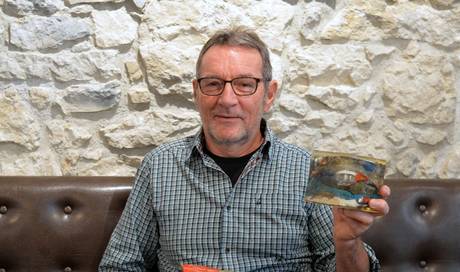Urs Rieder was on the road with this yacht.
“I was on the road with the World ARC (Round the World Rally) for a total of 14 months,” says Urs Rieder about his adventure. From the starting island of Santa Lucia in the Caribbean, it went to Colombia, through the Panama Canal, across the Galapagos Islands, where Rieder disembarked for the first time. The yacht “O’Deline” then sailed through the South Seas to Port Villa in the Vanuatu Archipelago, where the man from Solothurn rejoined the crew.
“Via the Barrier Reef in Australia we went to Lombok, Indonesia , where the fleet had very sad and thoughtful days because the holiday island was shaken by two severe earthquakes within a week on July 29, 2018.” On the other hand, the trip to Borneo’s Tanjung Puting National Park to see the orangutans was wonderful.
In the end, Corona got in the way of the project
The journey continued to Singapore, Thailand, India and Sri Lanka, where Urs Rieder took another break. The “O’Deline” sailed on to Muscat and in Male he boarded again. “We sailed south in the Indian Ocean to Mauritius, La Réunion and to Marina Richards Bay on the east coast of South Africa ,” explains Rieder. At the Cape of Good Hope it was definitely over for him, while the sailing trip continued via Brazil to Grenada. “In the end, the corona pandemic got in the way of the project. The ‘O’Deline’ was no longer allowed to dock in Santa Lucia as planned. The expedition ended in Grenada. “
But how does someone from the southern foot of the Jura come to sail around the world ? Urs Rieder grew up in Feldbrunnen and began working in IT when the computer was just taking over the world in the 1980s. “I lived in Australia for a couple of years and met a Swiss man there whose brothers sailed. When I got back to Switzerland, they invited me to go on a sailing trip to the Caribbean. It really grabbed me there. For a vacation trip it is the most beautiful area you can imagine, ”he remembers. “When I came back, I did both the sailing test for inland waters and the high-sea permit for all oceans. Today I own a ship on Lake Neuchâtel. “
But there is still a long way to go from island hopping on vacation to circumnavigating the world . «I became aware of the initiative of the Bernese artist Harald Reichenbach through a sailing friend who has unfortunately passed away. The timing was perfect. Freshly retired, I had the time and inclination, so I signed up.
At the start in St. Lucia it was exciting and turbulent because of the strong wind, everyone wanted to be the first to cross the start line. Fortunately, there were no accidents in the fleet of 34 yachts. In St. Marta, our skipper disembarked due to personal problems and I took over the O’Deline as skipper. “
This meant that Urs Rieder had civil and criminal responsibility for the safety of the ship and crew during the voyage. All nautical tasks (navigation, weather , tides) as well as customs and immigration belonged to his department.
Garbage from China can be found in the Galapagos Islands
“The waste in the oceans is a very sad chapter,” says Rieder. “There are beaches, far from civilization, where a lot of plastic is washed ashore. In the Galapagos Islands, for example, you can find garbage that originated in China and was carried across the entire Pacific by the ocean currents. If we keep producing plastic waste, there will be more microplastics in the ocean than plankton in 20 to 30 years. “
–
—-
Urs Rieder encountered such sights on his journey: There is a lot of rubbish washed up on the beach of this uninhabited island.
© zvg
—
—
On the trip he met children who thought that rubbish on the beach was just part of it. Together with local schools and environmental organizations, the project with artist Reichenbach collected a lot of civilization garbage washed up, especially on the beaches in the Pacific and Indian Oceans. Then the waste was pressed into cubes that fit into the clear shapes.
The resin-filled cubes have an edge length of exactly 10 centimeters and Harald Reichenbach creates sculptures that are one cubic meter in size from 1,000 cubes. The coordinates of where the garbage originates are entered in each G-Cube. You can now buy the dice for 400 francs and support the project financially.
“We want to sensitize the young generation with our project, because they have to find a way to prevent plastic waste from getting into the environment,” says Rieder. “There are already islands in the South Pacific where plastic is banned, and food is again wrapped in banana leaves as before. It’s a little more complicated, but it works. “
–
